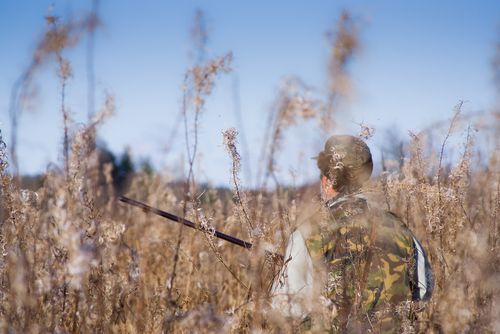| Online: | |
| Visits: | |
| Stories: |

| Story Views | |
| Now: | |
| Last Hour: | |
| Last 24 Hours: | |
| Total: | |
The Art of The Hunt: What You Need to Know About Your Prey
Aaron Spuler is a firearms enthusiast and recreational shooter. Follow more or his work at The Weapon Blog
Hunting is an art. It takes more than just wielding a bow or rifle to get a kill; you need a thorough knowledge of your prey and its behavioral patterns to be a successful hunter. Each individual animal has specific biological behaviors, and knowing what they are is a valuable hunting skill. Useful info and even training can be found on hunting course websites like huntercourse.com, but what behavioral information is useful to know about the specific game you’re hunting? Here is a list of the most popular game, their biological nuances, and tips on how to successfully hunt them.
Deer
Believe it or not, a whitetail deer has about 300 million scent detectors (as a reference, humans only use about five million scent detectors). You can manage scent control by using the wind to carry your scent — it is best to approach your hunting area with the wind in your face, so your scent is blown away from the location of your prey. Use odor-free products when it comes to your laundry detergent, body soap, shaving cream and shampoo. Companies such as Dead Down Wind manufacture fragrance-free products made specifically to keep your odor profile as low as possible. Avoid gas stations and alcohol before a hunt as well. There’s also a unit called the Ozonics generator that is easy to transport — about the size of a clock radio — and alters the odor of oxygen.
Rabbit
The easiest way to scout a rabbit is knowing its eating patterns. Identifying the environment you’re most likely to find a rabbit grazing is key; typically areas where there is tall grass, clover, broadleaf fields, soy, wheat, alfalfa and/or vegetable gardens. Rabbits feed in minimal light — at sunrise and sunset — which are the best times to go for the hunt. Rabbits will engage in their grazing period for about an hour — the first half is rapid grazing, followed by more selective eating. Rabbits have a large range of overhead vision and can easily notice nearby movement, so reducing your motion in the field will yield the greatest results.
Pheasant
Like rabbits, hunting pheasants is best during the eating period which falls in the early morning and at dusk. While they may roost in trees, pheasants feed on the ground and are often found in grasses or other light cover, looking for food (they are omnivores, with a diet consisting of mostly fruit, seeds and leaves, as well as insects, small snakes and lizards). To locate a pheasant nest, first identify the female’s wintering range, as the nesting site will generally be less than half a mile away. Nests are usually made among tall grass and vegetation on the ground. The female will create the nest in a hollow part of the ground that she scoops out herself, which will measure up to three inches deep. Being able to identify this nesting area is useful when locating the birds for the hunt.
Knowing the biological peculiarities of the game you’re hunting will give you a great advantage. This teaches you to anticipate the next likely move of your prey and always be one step ahead.
Source: http://www.weapon-blog.com/2015/05/the-art-of-the-hunt-what-you-need-to-know-about-your-prey/




